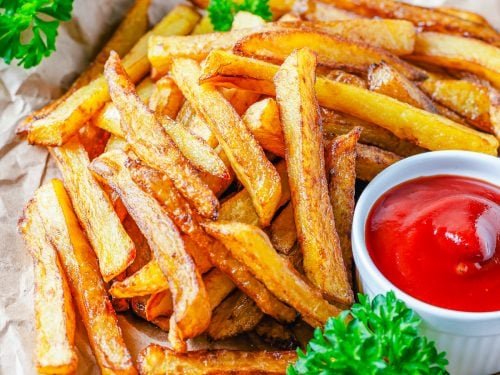
In the world of culinary indulgences, few treats rival the universal allure of French fries. Crispy on the outside, fluffy on the inside, and utterly irresistible, French fries have captured the hearts and taste buds of food enthusiasts across continents. But what makes this humble side dish so unique? Join me as we embark on a flavorful journey to uncover the rich history, diverse variations, and enduring charm of French fries.
A Heritage of Innovation
Despite their name, the origins of French fries are shrouded in mystery and debate. While they are often associated with France, some culinary historians suggest that French fries may have actually originated in Belgium, where they were traditionally served alongside fried fish.
The earliest known reference to “French fried potatoes” dates back to the late 17th century in Belgium, where villagers living in the Meuse Valley would fry small fish to accompany their meals. During the winter months when the rivers froze over and fishing was impossible, they turned to frying strips of potatoes as a substitute—a practice that eventually evolved into the beloved dish we know today.
French fries gained popularity in France during the 18th century, thanks in part to Thomas Jefferson, who encountered them during his diplomatic missions in Europe and introduced them to America upon his return. However, it wasn’t until the late 19th and early 20th centuries that French fries truly became a global phenomenon, thanks to the rise of fast food culture and the invention of the deep fryer.
The Art of Fryology
At its core, the magic of French fries lies in their deceptively simple preparation. The process begins with selecting the perfect potatoes—typically high-starch varieties such as Russets or Yukon Golds—which are then peeled, washed, and cut into uniform strips.
Next comes the crucial step of frying, which requires precision, patience, and just the right amount of oil. Traditionalists swear by the double-fry method, which involves frying the potatoes at a lower temperature to cook them through, then frying them again at a higher temperature to achieve a crispy exterior.
The type of oil used can also impact the flavor and texture of the fries, with options ranging from classic vegetable oil to luxurious choices like duck fat or beef tallow. Each oil imparts its own unique flavor profile, adding depth and complexity to the final dish.
But perhaps the most important factor in creating the perfect French fry is the seasoning. A generous sprinkle of salt is essential to enhance the natural flavors of the potatoes, while adventurous souls may choose to experiment with additional seasonings such as garlic powder, paprika, or herbs for a flavor-packed punch.
Global Variations
While the classic French fry reigns supreme, variations abound in cuisines around the world, each offering its own unique twist on this beloved dish.
In Belgium, French fries are traditionally served with a dollop of mayonnaise or a drizzle of tangy sauce, creating a decadent treat known as “frites sauce.” In Canada, poutine takes French fries to new heights by smothering them in gravy and cheese curds—a rich and indulgent concoction that has become a national treasure.
In the United Kingdom, fish and chips are a beloved staple, pairing crispy fries with tender battered fish for a satisfying meal that’s best enjoyed with a sprinkle of vinegar and a dash of salt. And in the United States, loaded fries have become a favorite indulgence, piled high with toppings like cheese, bacon, jalapenos, and sour cream for a decadent feast.
Cultural Significance
Beyond their culinary appeal, French fries hold a special place in popular culture, serving as a symbol of indulgence, comfort, and conviviality. Whether enjoyed as a late-night snack, a side dish with burgers and sandwiches, or a guilty pleasure at fast-food joints, French fries evoke a sense of joy and nostalgia that transcends borders and generations.
In many cultures, French fries are a staple of street food vendors and casual dining establishments, where they are enjoyed by people from all walks of life. From bustling city streets to sleepy seaside towns, the aroma of freshly fried potatoes wafting through the air is a universal invitation to indulge in a crispy delight that knows no bounds.
Conclusion
In a world filled with culinary wonders, French fries stand out as a timeless classic—a crispy, golden reminder of the simple pleasures in life. From their humble beginnings in the villages of Belgium to their global domination on menus around the world, French fries have captured the hearts and taste buds of food enthusiasts everywhere.
As we savor each crispy bite, let us not only revel in the deliciousness of French fries but also celebrate their rich history, diverse variations, and enduring charm. For in French fries, we find not just a dish, but a culinary icon—a symbol of indulgence, innovation, and the universal joy of good food shared with good company.









